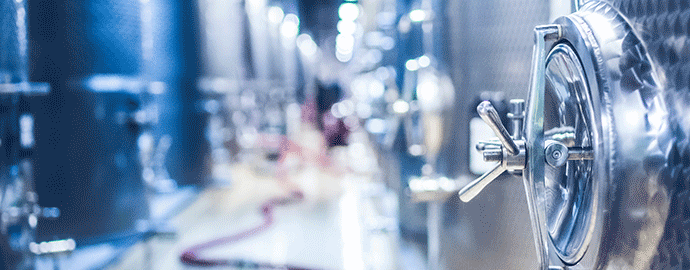Cold production: detection of refrigerant gases in the food industry

Do you use freezers, compressors, cold rooms or refrigerators as part of your professional work? This equipment has the common point of operating with refrigerants according to the cold production principle.
Refrigerant gases, commonly known as refrigerants or freons, present several potential hazards to your company's staff in the event of leaks:
- Toxic risks (if inhaled or skin contact);
- Fire and explosion hazards depending on the nature of the gas;
- Environmental risks.
These different risks require the implementation of a safety and prevention strategy within your structure. The efficacy of this strategy depends on the installation of refrigerant gas detectors. These devices will measure the concentration of fluids within your facilities and can alert you to hazards related to a leak.
Refrigerant gases: the use of ammonia and CO2
Among the most well-known refrigerant gases of the general public are ammonia (NH3) and Carbon Dioxide (CO2). These fluids, which are part of the family of inorganic compounds, were already used during the first period of artificial cold over a century ago. Abandoned due to their toxicity (for NH3) or their difficulty of use for the time (for CO2), they are again popular for refrigeration as they do not present major environmental risks.
Ammonia (NH3)
Today, Ammonia is a refrigerant that is very suitable for large industrial plants due to its excellent thermodynamic capabilities. However, it is toxic, flammable and corrosive, which is why detecting it is a priority to secure your employees, your site and to meet regulatory requirements.
Carbon Dioxide (CO2)
Carbon Dioxide is a refrigerant that is widely used for commercial refrigeration equipment as it is natural, environmentally friendly and high-performance. Its volumetric cooling capacity is also 5 times higher than the R404A.
What refrigerant gas leak detectors should you install?
Teledyne offers several refrigerant detection systems. Depending on the nature of the fluid, our equipment automatically puts in place measures protecting and securing your professional sites: signalling of a possible fire, triggering an emergency mechanical ventilation, total shutdown of the failed refrigeration system.
These measures allow you to prevent any risks related to the use of equipment using refrigerant gases:
- Protection of personnel and the public from gas leaks;
- Reduction of refrigerant losses;
- Securing stored products;
- Prevention of fire and explosion risks.
Our range of refrigerant gas detectors
Teledyne offers several ranges of fixed detectors for refrigerants, be it OLCT 100 XP IR which detects infrared, or the gas detector CTX 300, or the detectors of the 10 series: OLCT 10 and OLCT 10N.
Certain portable gas leak detectors can also meet the requirements of your industry.
